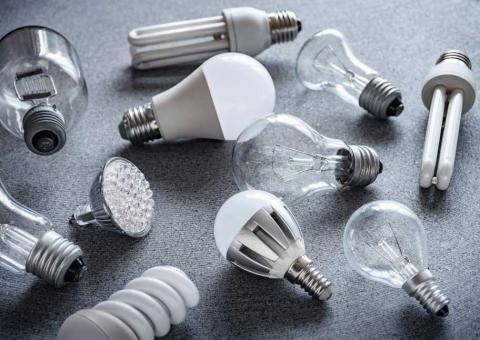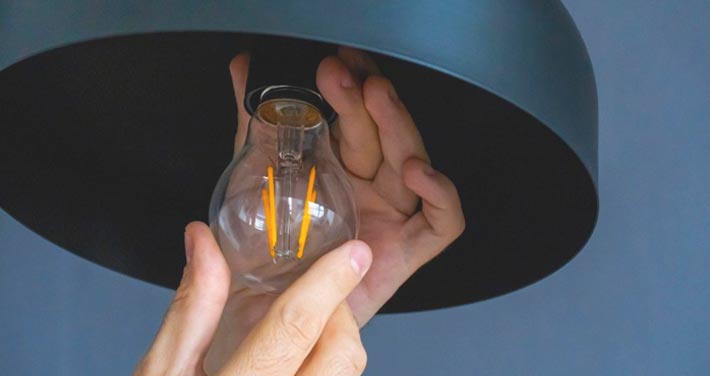The transition to a more energy-efficient light bulb has brought with it the challenge of proper disposal at the end of its useful life. While many can be safely disposed of in normal household waste, some bulbs contain mercury and should be recycled appropriately. Curbside recycling is not appropriate for any type of lightbulb, as even traditional incandescent bulbs contain tiny electric filaments that can’t be separated from the glass using current technology.
Did You Know? Compact fluorescent bulbs carry an end-of-life recycling fee, included in the purchase price, that covers the cost of recapturing the mercury and repurposing the remaining materials.
Benefits of Recycling
Aside from reducing the amount of waste in our landfills, recycling some types of light bulbs has other environmental advantages. For example, recycling prevents the release of mercury, a neurotoxin, from CFLs. These bulbs are susceptible to breakage when thrown into a dumpster or trash can. Recycling enables the glass, metal, and other materials to be reused, as virtually all components can be recycled.
Incandescent Bulbs
Standard filament bulbs should be disposed of with other household refuse. It’s a good idea to wrap broken bulbs in newspaper or place them inside paper lunch bags to avoid injury. Home improvement guru Bob Vila has three tips for removing broken light bulbs from their sockets – one of which involves a raw potato.
Fluorescent Bulbs
Fluorescent bulbs come in many shapes and sizes, all of which contain small amounts of mercury. Compact fluorescents (CFLs) can be used in place of standard filament bulbs in standard sockets, and fluorescent tubes (which can also be circular) are most often used in commercial buildings. Both use 25 to 35 percent less electricity than incandescent bulbs and contributed significantly to energy efficiency when they debuted in the 1970s.
Halogen Lamps
Halogen light bulbs can also be disposed of in normal household waste. They do not contain harmful materials, and the high cost of recycling them makes it prohibitive.
LED Lamps
LEDs (light-emitting diodes) are the most efficient lighting option available, and represent a 90 percent improvement over incandescent bulbs. LEDs have a life span 40 times that of incandescent bulbs, and when they do reach the end of their useful life, as much as 95 percent of the glass and metal used to make them can be recycled.
Where to Recycle LED and Fluorescent Bulbs
Many municipal safety departments offer recycling for LED and CFL bulbs, either on specific days or at set locations. Big-box stores (Home Depot, Lowe’s, IKEA) often have in-store bins where bulbs can be dropped off, and some hardware stores will accept them for a small fee. If local recycling isn’t an option, pre-paid kits can be purchased to recycle bulbs by mail – simply fill up the box with used bulbs, seal, and leave it for your mail carrier.
Key Takeaways:
- Some states and local jurisdictions have more stringent regulations than the EPA does, and may require that you recycle CFLs and other mercury-containing light bulbs.
- Should you accidentally break a fluorescent bulb, do not vacuum, as vacuuming can spread mercury-containing powder or vapors.
- Replace incandescent and CFL bulbs with LEDs as they burn out to reduce the number of bulbs discarded in the garbage or through recycling. Look for ENERGY STAR® lighting products at participating retailers or search our MassSaves.com or NHSave.com marketplaces.





